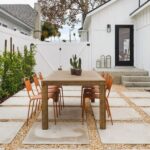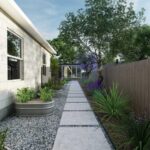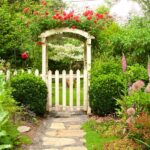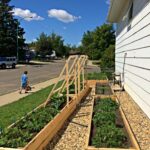Side yard gardens are becoming increasingly popular among homeowners looking to maximize their outdoor space and add a touch of greenery to their property. These narrow strips of land on the side of a house are often overlooked, but with a little creativity and effort, they can be transformed into vibrant and inviting garden spaces.
One of the biggest advantages of a side yard garden is that it can serve as a hidden oasis, providing a private and secluded retreat away from the hustle and bustle of the main yard. With tall fences or walls on either side, side yards offer a sense of seclusion that is perfect for relaxation and unwinding after a long day.
When designing a side yard garden, it is important to consider the dimensions and layout of the space. Because side yards are typically long and narrow, it is essential to make the most of the available space by using vertical elements such as trellises or tall plants to create visual interest and maximize the growing area.
In terms of plant selection, it is important to choose plants that are well-suited to the unique conditions of a side yard, such as limited sunlight, poor soil quality, and potential exposure to foot traffic. Shade-loving plants like hostas, ferns, and hydrangeas are great options for side yards that receive minimal sunlight, while succulents and drought-tolerant plants are ideal for areas that are prone to drought.
To add a sense of cohesion and continuity to the side yard garden, consider creating a theme or color scheme that ties the different elements together. This could involve using a particular color palette, selecting plants with similar shapes or textures, or incorporating decorative elements like statues or garden ornaments that reflect a specific theme or style.
In addition to plantings, side yard gardens can also benefit from the addition of hardscaping elements such as pathways, patios, or seating areas. These features can help to define the space, provide functionality, and create a sense of flow that connects the side yard to the rest of the outdoor living areas. By incorporating a mix of plants and hardscaping elements, homeowners can create a side yard garden that is both beautiful and practical, adding value and enjoyment to their property.
















